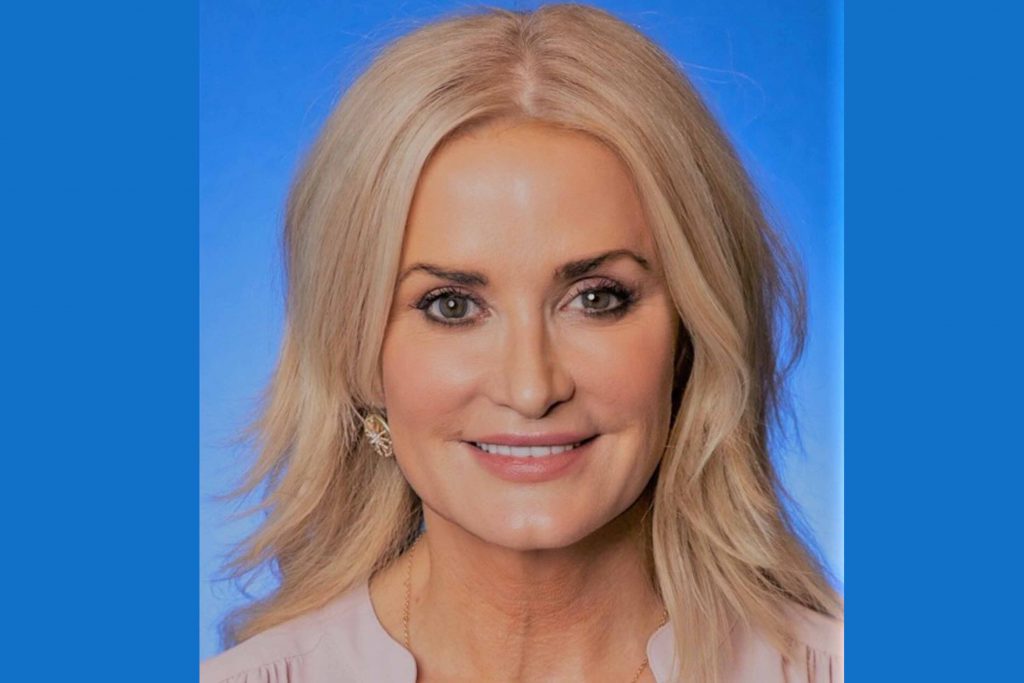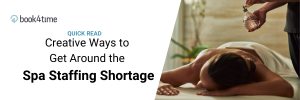
We talked with Marriott’s Senior Corporate Director of Spa Operations, Suzanne Holbrook, about how to make the most of the revenue generating power of spa and wellness.
If there is someone who can talk about hospitality, spa, and wellness revenue, it’s Suzanne Holbrook. Marriott’s Senior Corporate Director of Spa Operations, Ms. Holbrook oversees 160 spas at hotels and resorts that include The Ritz-Carlton, St Regis, W hotels, JW Marriott, Luxury Collection, Autograph, Westin, Marriott, Renaissance, Gaylord & Sheraton. She is responsible for driving spa performance through a focus on business development, revenue generation, guest experience, design, branding, and education.
With 40 years in the industry, Ms. Holbrook is recognized for an almost magical ability to produce outstanding financial results. Previously, as an executive Spa Director for The Ritz-Carlton Spa, Orlando, Ms. Holbrook increased revenues by $USD2million in two years.
Recently, we spoke with Ms. Holbrook about why yield management is the fastest and easiest way to increase revenue in a Spa Executive Master Class Webinar. She also recently wrote an executive column for us on dynamic pricing.
Here we speak with her about how to make the most of the revenue generating power of spa and wellness.
Talk to us about your career trajectory.
I’ve been in the industry for about 40 years now. I started as a hairstylist, owning my own salon business for eight years. I sold up shop in my early thirties, decided to see the world, and joined cruise ships with Steiner Transocean. At the time I was asked if I wanted to be a manager, but I said no, I want to go out for six months and just have a fun time. But I’m too bossy, I guess, and was drawn back into leadership within my first contract. Six months became six years. I was Spa Director for multiple cruise ship spas, and saw some of the beautiful world, meeting amazing people, including my husband.
When I left ships, I took a position as Executive Spa Director for the Ritz Carlton in Puerto Rico, about 21 years ago. When I started, the spa was $350,000 in debt and guest scores were very low. The training with Steiner’s taught me that you can provide great guest service and also make a profit. The team took a few months to get used to the new structure, but within six months we had an amazing team, who were also making money, the P&L was healthy, and our guest scores were in the top three company wide.
The corporate office quickly noticed that spas do not just have to be an amenity in our company if managed with a business mind set and sent me to open a large new spa in Atlanta, then to open a 40-room spa at the Ritz Carlton, Orlando, where I had an incredible nine years. While working in operations I also worked on The Ritz Carlton Spa corporate direction, developing programs, standards, and supporting The Ritz-Carlton Spa division globally. 10 years ago, I moved completely out of operations to oversee all spa brands into this incredible role, which I, absolutely, adore.
What are some of the biggest changes you’ve seen since you started in the industry?
As mentioned before, hotel spas were an amenity. It wasn’t understood or taken seriously.
Traditionally, hotel senior leadership haven’t always understood how spas can be a great asset, and how they need to be managed by smart, savvy business leaders with a support system in place to allow them to grow the business. In this continent, in 2019, we made almost a quarter of a billion dollars just in the Americas region for spas. That’s a lot of massages, a lot of business. So, I think we’re taken a little more seriously now and I have to say Marriott as a company supports and understands the importance of spa & wellness.
Does the hotel industry understand the revenue generating potential of spa and wellness?
If you look at all the major hotel brands, including Marriott, all are incorporating wellness. I think there is still a lot more work to do, but we are in a much better place than we were two years ago.
I like to compare spas to a room’s division. You have a front desk, retail shop, a sales division, housekeepers, rooms, accounting etc. But we don’t turn 300 hotel rooms in two or three days. We turn 300 or more spa rooms in one day. When you explain it like that, it’s like a light bulb goes off for non spa leadership, as it’s a business they can relate to it. This is a complex business with very different employee dynamics, and you need to put a strong leadership organization and support in place for it to be successful.
Can you talk a bit about the benefits of yield management and why some people are afraid of it?
Spas frequently offer discounts to fill empty treatment rooms. It seems this is an accepted and fair approach to dynamic pricing. But this is a “Discount Strategy.” Just imagine the marketing and communication strategy: “Mud Wrap, 40% off,” ‘’Massage, 30% Discount.” Is this the way we want to position our spas, that of a discount house?
While discounting is an easy way to attract extra demand, it is unfortunately only a short term solution. A discount strategy can have a negative impact on the consumer’s value of treatments, services, and brand. Consumers will want access the discounted prices most of the time. Discounting will only down trade revenue potential.
Yield management is a simple concept. To implement differential pricing, we need to get more creative, by maximizing revenue during peak periods and deviating demand to off-peak periods, optimizing the overall revenue stream of the spa.
Instead of offering discount in shoulder periods, increase pricing in high demand times. Example: you’re fully booked on Saturdays, between the hours of 2pm and 6pm, add an additional $20 to each treatment, if there is push back (which there rarely is) offer an alternative of a low demand time, or day at regular rack rate.
There’s always fear of change! But airlines, (almost of the verge of bankruptcy) took on this strategy many years ago and became very profitable! We are used to this with airlines and hotels, but not for spa. WHY? Let’s be the disruptors. We shouldn’t wait for every other industry to move forward.
However, successful implementation involves detailed analysis and careful decision making and planning withing a framework of clear and effective policies and procedures. Put strong processes in place, and we can be the disruptors, and make the change.
There are many facets to yield management. I launched a company-wide program about 11 years ago called Spa Plus, where the front desk or therapist would be financially incentivized for offering an upgrade within treatment time, like stones, face masks, CBD, scalp treatments etc, for an additional cost. We developed a comprehensive training platform including manuals and videos to ensure the teams were fully educated and prepared. This increased revenue by $8 million in 2019 with an 80% profit.
What challenges is the industry facing and will be facing in the foreseeable future?
Staffing continues to be a great challenge. There are far fewer massage schools than there were 10 years ago. Our trainers are dwindling. We have to find a way to get into schools, even high schools, and make spa look attractive. It’s just not appealing to them. We need to turn this around. By the time they get to college it’s too late, they already know what they want to do. We have to get into high schools and even pre high schools and say, “this is a great industry. You can make good money.” Massage therapists can earn sixty to a hundred thousand dollars a year in a resort spa, with great benefits, uniforms, holiday pay, 401K, leadership growth, and more. And we get to work in these beautiful locations. It’s a really great career.
What are you excited about?
I’m excited about the future of wellness. The pandemic has highlighted the need to live a healthier life, physically and mentally. Awareness on the benefits of sleep, mental health, meditation, breath work and physical activity will continue to grow. Wellness Technology is exploding, health tracking wearable devices, mattresses that sense your health patterns, meditation chairs, skin mapping. Touchless therapy such as float tanks, LED treatments, even IV therapy will allow offerings as staffing issues become more challenging.
Touch therapy (massage, facials, etc.) will always be important to the consumer, and will remain a high percentage of the business, but there are many other offerings we are starting to see.
I’m very excited about the new young leaders joining the industry. It’s our responsibility to educate, support and mentor young leaders, and what we can learn from them. The future is bright.
Looking for solutions to the spa staffing crisis? Check out some ideas by downloading this guide.
Spa Executive is published by Book4Time, the leader in guest management, revenue and mobile solutions for the most exclusive spas, hotels, and resorts around the globe. Learn more at book4time.com





I thoroughly enjoyed reading Suzannes article. I 100 percent agree that after covid we need wellness more now than ever before. I have worked in health and wellness for 30 years and realise that good recognised therapists are hard to come by. Post covid has brought on a need for a new direction in the wellness centres. I have worked in a health retreat in Malta for the past 2 years being with the clients through their stages of detox. All sorts of life traumas, addictions weight problems etc are supported by loyal trained professional therapists willing to support there journey all the way. Its amazing to watch the transition and to be part of their journey its so rewarding. I perform Hydra Colon Therapy which works with the colon where initially all problems start through stress. This is why we need to support them going forward.
SUZANNE talked about going into schools this is the way forward. I myself trained with an organisation that offers a massage in schools program which helps children to relax and gives focas before starting the school day. Education is the key for changing lives.